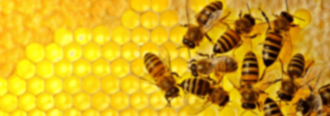
Autumn Thoughts
By: Ross Conrad Fences, honey and queens. Electric Fence Considerations According to the Vermont Fish and Wildlife Department, the black bear population in the state…
Read More
By: Ross Conrad Fences, honey and queens. Electric Fence Considerations According to the Vermont Fish and Wildlife Department, the black bear population in the state…
Read More

By: Vaughn Bryant Filtering honey has become a big issue among many individual beekeepers. Many beekeepers want to remove large items of debris such…
Read More
By: Jim Thompson The first jar invented specifically for honey. I collect old honey jars and when I heard that the Muth Jar was…
Read More
Winter and Summer Loss Survey, Plus, Spring and Summer Honey Crop Survey Bee Culture’s field reporters this month have been busy, and we’ve…
Read More
By: Kathy Summers EAS 2017 Chickens Bees Kim and I spent last week (August 1-4) at the University of Delaware attending EAS 2017. We…
Read More
By: Kim Flottum August was about as busy a time as I’ve had in years. We were gone for a week to Delaware for the annual…
Read More
By: Jeremy Barnes Dr. Mark Winston ended his report on the recent Bee Audacious Conference (Bee Culture, June 2017) with the exhortation that “We…
Read More
By: Nicola Bradbear Hundreds of supporters of Bees for Development gathered to celebrate bees and the work of the Charity in the gardens of…
Read More
By: Lloyd Harris What Happens In Colonies AFTER Mid August Determines How Successfully Colonies Can Be Wintered If you ask most beekeepers how they prepare…
Read More
By: David VanderDussen and Kathleen Ireland NOD Apiary Products’ Story Of Innovation Part 3, Developing An Environmentally Friendly Miticide Recap: In Part 1 of…
Read More
By Clarence Collison Queen Cells and Rearing Stimuli There are basically two types of queen cells – those made from a worker larva, and…
Read More
By: Jay Evans Minerals and The Bees’ Needs Rachael Bonoan and colleagues at Tufts University have been studying the impacts of salt and other…
Read More
By: Connie Krochmal This article will conclude the series on foraging book reviews. “Midwest Foraging-115 Wild and Flavorful Edibles from Burdock to Wild…
Read More
By: Ann Harman Well, this year’s honey crop was a bust. Rain, rain and more rain during the blooming time of this area’s major…
Read More
Swammerdam’s Apprentice Beeswax. What Is It? The main constituents and the physical properties of beeswax.Wax is a hydrocarbon – contains the elements carbon, hydrogen…
Read More
By: Jessica Louque Turkey Wars Sometimes, I get a few complaints from readers that my article has nothing to do with bees, or is…
Read More
By: James Tew Well, is it European Foulbrood or not? Comb – much more than a hive product. Odds and Ends – Adding wax…
Read More
By: Jennifer Berry The thought of taking a 12-24 hour old larvae and transforming it into a queen is amazing. It’s been almost 20…
Read More
By: Sarah Gabric Everywhere you might go in Costa Rica, from the capital city of San Jose, to a remote barrio, to a tourist…
Read More